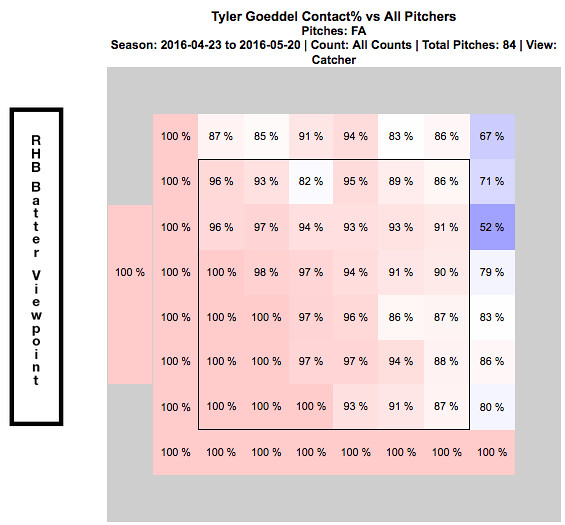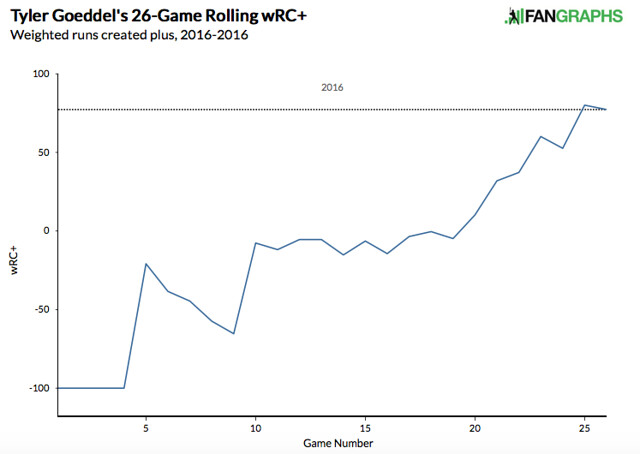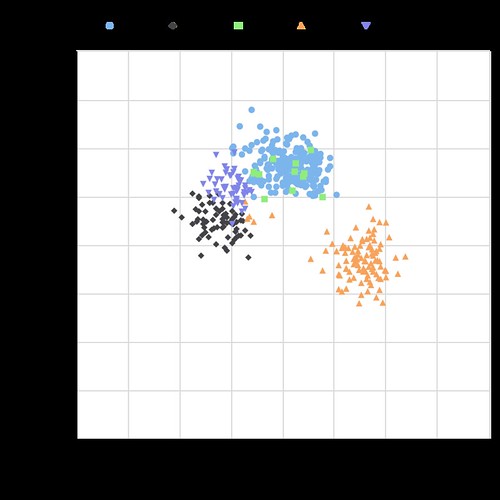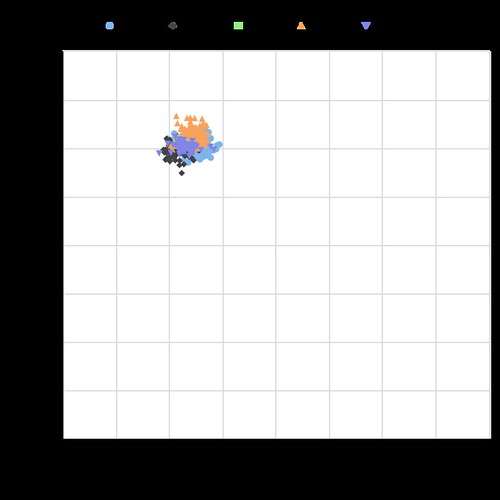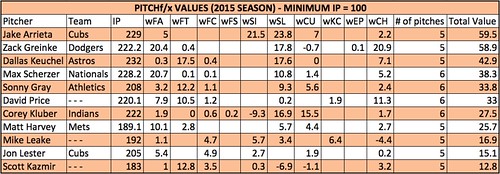116.
116 is the Major League Baseball record for most wins in a single season, achieved by the 1906 Chicago Cubs and the 2001 Seattle Mariners.
For 95 years the record was unbreakable. Fifteen years after that, it remains unmatched.
Major-league players are assigned a value called Wins Above Replacement (WAR), a statistic that displays the number of wins a player added to the team above what a replacement player would have added. In recent years, a WAR value of 8 or higher would be associated with an MVP-quality season, a value of 5 for an All-Star, 2 for the average starter, 0-2 for a bench player, and less than 0 for a replacement player.
With my curiosity looming, I decided to do a little research and came up with a list of the highest single-season WAR values for every position throughout history. But I decided to take it a step further. I wanted to create the greatest WAR-based roster of all time, a 25-man winning powerhouse that would be called, fittingly, the WARriors. I found the highest single-season WAR for each of the starting eight non-pitcher positions, followed by the highest single-season WAR for a five-man starting rotation, and then decided to add three infielders, three outfielders, a catcher, four relief pitchers, and a closer, all with the highest single-season WAR in their respective position (for the bench hitters, I chose the players with the NEXT-highest WAR at their position, behind the starting eight).
Here’s what I came up with:
WARriors Roster
C- Mike Piazza 1997 – 8.7 WAR
1B- Lou Gehrig – 1927 – 11.8 WAR
2B- Rogers Hornsby 1924 – 12.1 WAR
3B- Mike Schmidt 1974 – 9.7 WAR
SS- Cal Ripken Jr. 1991 – 11.5 WAR
LF- Carl Yastrzemski 1967 – 12.4 WAR
CF- Barry Bonds 2001 – 11.8 WAR
RF- Babe Ruth 1923 – 14.1 WAR
Total: 92.1 WAR
UT- Honus Wagner 1908 – 11.5 WAR
OF- Ty Cobb 1917 – 11.3 WAR
OF- Mickey Mantle 1957 – 11.3 WAR
OF- Willie Mays 1965 – 11.2 WAR
UT- Joe Morgan 1975 – 11.0 WAR
UT- Jimmie Foxx 1932 – 10.5 WAR
C- Johnny Bench 1972 – 8.6 WAR
Total: 75.4 WAR
SP- Tim Keefe 1883 – 20 WAR
SP- Old Hoss Radbourn 1884 – 19.3 WAR
SP- Jim Devlin 1876 – 18.6 WAR
SP- Pud Galvin 1884 – 18.4 WAR
SP- Guy Hecker 1884 – 17.8 WAR
Total: 94.1 WAR
RP- Jim Kern – 1979 – 6.2 WAR
RP- Mark Eichhorn – 1986 – 7.4 WAR
RP- John Hiller – 1973 – 8.1 WAR
RP- Bruce Sutter – 1977 – 6.5 WAR
CL- Goose Gossage 1975 – 8.2 WAR
Total: 36.4 WAR
Added together, the total team WAR for the WARriors is a ridiculous 298. That’s almost two full seasons of wins. To put it in perspective, the 2001 Mariners had a total team WAR of 67.7, and the 1906 Cubs’ total was 56. This is expected, however, and is a near impossible task to analyze efficiently because of the lack of pre-1900 data, and the mix of players from almost every decade. But it’s still fun to look at, so let’s run with it.
Now, the question on the table is this: Would this team win more than 116 games? I’d put money on it. But an even bolder question, would this team go 162-0? Again, we have to understand what we’re dealing with. The skill level of a ballplayer in 2016 is entirely different than an 1800s hurler pitching 500-600 innings per year. Luckily, we have the technology.
First, we need a starting lineup. As the self-proclaimed WARriors manager, here’s the Opening Day nine that I would play (each player listed had the highest single season WAR value for their position):
Hornsby 2B – .424/507/.696
Bonds CF – .323/.515/.863
Ruth RF – .393/.545/.764
Gehrig 1B – .373/.474/.765
Yastrzemski LF – .326/.418/.622
Schmidt 3B – .282/.395/.546
Piazza C – .362/.431/.638
Ripken SS – .323/.374/.566
Keefe SP – 41-27/2.41/359 K’s
But to go 162-0, we need to play 162 games, and who would those games be against? My idea was to simulate a 162-game season by playing 54 three-game series against the last 54 World Series champions (54 times 3 = 162). That should make it interesting, right? So for example, the WARriors would begin with three games against the 2015 Royals, followed by three against the 2014 Giants, then three versus the 2013 Red Sox, and so on, dating back to 1961. To be fair, every other series would be on the road, and the pitcher’s spot will bat. To support my love of the Reds, I decided to use the 2003 Great American Ball Park as the WARriors’ home stadium.
I used the whatifsports.com Dream Team simulator to assemble the WARriors roster. Because the data on their website only goes back to 1885, I will need to eliminate the years of my entire starting rotation from the original roster. However, I am replacing that data with each pitchers’ next-best year post-1885, or finding the next-best-WAR starting pitcher if one of the originals did not play beyond 1885, or if that next-best had a better WAR. Whatifsports manually subs position players as needed, and I manually rotated the starting pitchers every game, also switching the WARriors to the road team every other series.
Without further ado, here are the results of the simulated games:
2015 Royals @ WARriors
Game 1: WARriors 18 Royals 0
Game 2: WARriors 19 Royals 3
Game 3: WARriors 17 Royals 10
WARriors @ 2014 San Francisco Giants
Game 1: WARriors 11 Giants 0
Game 2: WARriors 2 Giants 1
Game 3: WARriors 11 Giants 8
2013 Red Sox @ WARriors
Game 1: WARriors 5 Red Sox 4
Game 2: WARriors 23 Red Sox 4
Game 3: WARriors 11 Red Sox 7
WARriors @ 2012 Giants
Game 1: WARiors 4 Giants 2
Game 2: WARriors 18 Giants 4
Game 3: WARiors 21 Giants 3
2011 Cardinals @ WARriors
Game 1: WARriors 21 Cardinals 2
Game 2: WARriors 27 Cardinals 0
Game 3: WARriors 23 Cardinals 2
WARriors @ 2010 Giants
Game 1: WARriors 18 Giants 8
Game 2: WARriors 6 Giants 1
Game 3: WARriors 13 Giants 10
2009 Yankees @ WARriors
Game 1: WARriors 7 Yankees 2
Game 2: WARriors 15 Yankees 3
Game 3: WARriors 10 Yankees 6
WARriors @ 2008 Phillies
Game 1: WARriors 5 Phillies 4
Game 2: WARriors 13 Phillies 1
Game 3: WARriors 9 Phillies 5
2007 Red Sox @ WARriors
Game 1: WARriors 8 Red Sox 3
Game 2: WARriors 16 Red Sox 8
Game 3: WARriors 12 Red Sox 5
WARriors @ 2006 Cardinals
Game 1: WARriors 21 Cardinals 7
Game 2: WARriors 18 Cardinals 4
Game 3: WARriors 17 Cardinals 11
2005 White Sox @ WARriors
Game 1: WARriors 8 White Sox 2
Game 2: WARriors 14 White Sox 0
Game 3: WARriors 12 White Sox 4
WARriors @ 2004 Red Sox
Game 1: WARriors 5 Red Sox 3
Game 2: WARriors 7 Red Sox 1
Game 3: WARriors 3 Red Sox 1
2003 Marlins @ WARriors
Game 1: WARriors 15 Marlins 0
Game 2: WARriors 23 Marlins 6
Game 3: WARriors 21 Marlins 5
WARriors @ 2002 Angels
Game 1: WARriors 9 Angels 7
Game 2: WARriors 7 Angels 0
Game 3: WARriors 16 Angels 5
2001 Diamondbacks @ WARriors
Game 1: WARriors 2 Diamondbacks 0
Game 2: WARriors 5 Diamondbacks 1
Game 3: WARriors 5 Diamondbacks 4
WARriors @ 2000 Yankees
Game 1: WARriors 13 Yankees 10
Game 2: WARriors 13 Yankees 12
Game 3: WARriors 19 Yankees 3
1999 Yankees @ WARriors
Game 1: WARriors 19 Yankees 13
Game 2: WARriors 16 Yankees 12
Game 3: WARriors 19 Yankees 9
WARriors @ 1998 Yankees
Game 1: WARriors 11 Yankees 5
Game 2: WARriors 8 Yankees 4
Game 3: WARriors 16 Yankees 1
1997 Marlins @ WARriors
Game 1: WARriors 27 Marlins 0
Game 2: WARriors 24 Marlins 2
Game 3: WARriors 15 Marlins 0
WARriors @ 1996 Yankees
Game 1: WARriors 13 Yankees 3
Game 2: WARriors 16 Yankees 0
Game 3: WARriors 25 Yankees 10
1995 Braves @ WARriors
Game 1: WARriors 9 Braves 5
Game 2: WARriors 10 Braves 2
Game 3: WARriors 6 Braves 4
WARriors @ 1993 Blue Jays
Game 1: WARriors 12 Blue Jays 6
Game 2: WARriors 13 Blue Jays 2
Game 3: WARriors 7 Blue Jays 1
1992 Blue Jays @ WARriors
Game 1: WARriors 10 Blue Jays 4
Game 2: WARriors 17 Blue Jays 13
Game 3: WARriors 15 Blue Jays 10
WARriors @ 1991 Twins
Game 1: WARriors 12 Twins 0
Game 2: WARriors 19 Twins 8
Game 3: WARriors 6 Twins 4
1990 Reds @ WARriors
Game 1: WARriors 10 Reds 9
Game 2: WARriors 5 Reds 1
Game 3: WARriors 12 Reds 2
WARriors @ 1989 A’s
Game 1: WARriors 16 A’s 12
Game 2: WARriors 11 A’s 7
Game 3: WARriors 21 A’s 6
1988 Dodgers @ WARriors
Game 1: WARriors 8 Dodgers 3
Game 2: WARriors 14 Dodgers 11
Game 3: WARriors 9 Dodgers 3
WARriors @ 1987 Twins
Game 1: WARriors 20 Twins 6
Game 2: WARriors 22 Twins 1
Game 3: WARriors 15 Twins 9
1986 Mets @ WARriors
Game 1: WARriors 12 Mets 2
Game 2: WARriors 15 Mets 5
Game 3: WARriors 9 Mets 5
WARriors @ 1985 Royals
Game 1: WARriors 9 Royals 5
Game 2: WARriors 4 Royals 3
Game 3: WARriors 17 Royals 5
1984 Tigers @ WARriors
Game 1: WARriors 8 Tigers 3
Game 2: WARriors 4 Tigers 1
Game 3: WARriors 14 Tigers 0
WARriors @ 1983 Orioles
Game 1: WARriors 19 Orioles 3
Game 2: WARriors 23 Orioles 4
Game 3: WARriors 14 Orioles 2
1982 Cardinals @ WARriors
Game 1: WARriors 21 Cardinals 0
Game 2: WARriors 18 Cardinals 1
Game 3: WARriors 7 Cardinals 5
WARriors @ 1981 Dodgers
Game 1: WARriors 6 Dodgers 0
Game 2: WARriors 16 Dodgers 0
Game 3: WARriors 10 Dodgers 6
1980 Phillies @ WARriors
Game 1: WARriors 9 Phillies 6
Game 2: WARriors 12 Phillies 0
Game 3: WARriors 15 Phillies 12
WARriors @ 1979 Pirates
Game 1: WARriors 8 Pirates 4
Game 2: WARriors 10 Pirates 9
Game 3: WARriors 15 Pirates 5
1978 Yankees @ WARriors
Game 1: WARriors 3 Yankees 0
Game 2: WARriors 6 Yankees 1
Game 3: WARriors 14 Yankees 1
WARriors @ 1977 Yankees
Game 1: WARriors 17 Yankees 14
Game 2: WARriors 11 Yankees 7
Game 3: WARriors 14 Yankees 9
1976 Reds @ WARriors
Game 1: WARriors 18 Reds 5
Game 2: WARriors 2 Reds 0
Game 3: WARriors 5 Reds 3
WARriors @ 1975 Reds
Game 1: WARriors 9 Reds 0
Game 2: WARriors 4 Reds 6
Game 3: WARriors 8 Reds 4
1974 A’s @ WARriors
Game 1: WARriors 16 A’s 13
Game 2: WARriors 10 A’s 2
Game 3: WARriors 9 A’s 7
WARriors @ 1973 A’s
Game 1: WARriors 1 A’s 0
Game 2: WARriors 12 A’s 4
Game 3: WARriors 4 A’s 0
1972 A’s @ WARriors
Game 1: WARriors 8 A’s 5
Game 2: WARriors 5 A’s 3
Game 3: WARriors 9 A’s 5
WARriors @ 1971 Pirates
Game 1: WARriors 16 Pirates 3
Game 2: WARriors 5 Pirates 1
Game 3: WARriors 11 Pirates 9
1970 Orioles @ WARriors
Game 1: WARriors 14 Orioles 12
Game 2: WARriors 9 Orioles 8
Game 3: WARriors 12 Orioles 2
WARriors @ 1969 Mets
Game 1: WARriors 22 Mets 0
Game 2: WARriors 17 Mets 0
Game 3: WARriors 15 Mets 1
1968 Tigers @ WARriors
Game 1: WARriors 12 Tigers 6
Game 2: WARriors 10 Tigers 4
Game 3: WARriors 18 Tigers 16
WARriors @ 1967 Cardinals
Game 1: WARriors 16 Cardinals 5
Game 2: WARriors 13 Cardinals 7
Game 3: WARriors 24 Cardinals 14
1966 Orioles @ WARriors
Game 1: WARriors 15 Orioles 2
Game 2: WARriors 20 Orioles 8
Game 3: WARriors 9 Orioles 3
WARriors @ 1965 Dodgers
Game 1: WARriors 5 Dodgers 3
Game 2: WARriors 6 Dodgers 3
Game 3: WARriors 5 Dodgers 0
1964 Cardinals @ WARriors
Game 1: WARriors 12 Cardinals 1
Game 2: WARriors 19 Cardinals 7
Game 3: WARriors 12 Cardinals 8
WARriors @ 1963 Dodgers
Game 1: WARriors 8 Dodgers 0
Game 2: WARriors 8 Dodgers 1
Game 3: WARriors 6 Dodgers 4
1962 Yankees @ WARriors
Game 1: WARriors 10 Yankees 9
Game 2: WARriors 3 Yankees 1
Game 3: WARriors 5 Yankees 2
WARriors @ 1961 Yankees
Game 1: WARriors 17 Yankees 11
Game 2: WARriors 11 Yankees 0
Game 3: WARriors 13 Yankees 2
WARriors Final Season Record: 161-1
Unbelievable. Well folks, there it is. If you actually sifted through all those results, you would see that the one, tiny blemish on an otherwise perfect season was game two against the notorious 1975 Big Red Machine. According to the simulation, George Foster went 1-4 in the game with a two-run shot, and Pete Rose added an RBI single and a stolen base. Ironically, my Reds were the one to end the streak.
In short, a 25-man roster of the best single-season WAR values in the history of baseball went 161-1 against the last 54 World Series Champions, playing each champ in a three-game series and alternating between road and home venues. The WARriors scored an outrageous 2,002 runs in 154 games during this simulation, equal to 13 runs per game. Their opponents scored 708 runs in 154 games, equal to about 4.5 runs per game. That’s a run differential of 1,294.
I am both astounded that I had the patience to run all of those games, and also that not one other team was able to sneak by this loaded roster.
This makes for a very interesting case, and leads to further questions and different match-ups that would be extremely fun to see. Different ballparks, more accurate values assigned, different lineups, etc. would obviously reveal a separate outcome, but these simulations revealed that winning isn’t everything.
Okay, maybe 161 times out of 162 it is.







